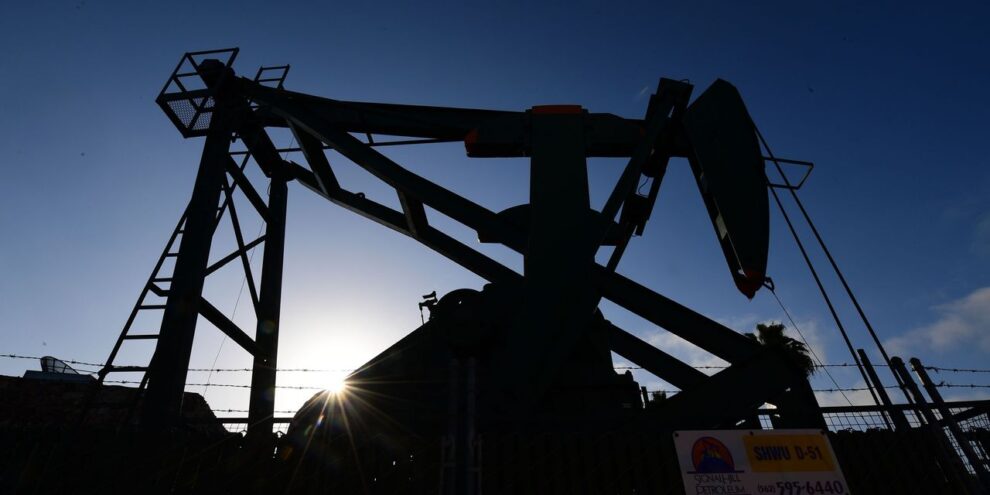
Oil futures ended lower on Friday, but notched a weekly gain as investors took their cue from progress on the rollout of COVID-19 vaccines which may help the economic recovery.
Signs of resilient demand in Asia and elsewhere also helped underpin prices, analysts said.
Overall, the fundamental backdrop for the oil market is “mixed with ominous coronavirus trends being offset by vaccine optimism, while faltering economic growth statistics are being shrugged off with continued high hopes for stimulus,” said analysts in the latest Sevens Report Research newsletter.
West Texas Intermediate crude for January delivery CL.1, -0.32% CLF21, -0.32% fell by 21 cents, or nearly 0.5%, to settle at $46.57 a barrel on the New York Mercantile Exchange. February Brent crude BRN00, +0.10% BRNG21, +0.10% lost 28 cents, or 0.6%, at $49.97 a barrel on ICE Futures Europe, settling below the key level of $50 after breaching it this week for the first time since March.
WTI registered a 0.7% weekly rise though, while Brent tacked on 1.5%. Both benchmarks on Thursday marked their highest front-month contract settlements since March 4, according to FactSet data.
Read: Natural-gas prices look to end the year higher for the first time since 2016
The market reaction earlier this week to the largest weekly rise in U.S. crude inventories since April — and the second largest rise on record — was particularly impressive, said Michael Tran, commodity analyst at RBC Capital Markets, in a note.
“To say that the market shrugged off the bearish data release is a massive understatement. The distinct FOMO type shift in financial market sentiment is supported by a global physical market that is absorbing barrels at a more robust than consensus pace,” he said.
Oil is building on sharp November gains, attributed largely to progress toward COVID-19 vaccines, which outweighed worries over the potential hit to demand from a surge in cases in the U.S. and Europe.
The vaccine developed by Pfizer Inc. PFE, -1.64% and BioNTech SE BNTX, -2.50% was rolled out in the U.K. earlier this week, while the U.S. Food and Drug Administration was seen moving toward emergency authorization of the vaccine after an advisory panel voted that benefits of the drug outweighed the risk.
Tran said the physical market remained resilient, with Asian refinery runs remaining firm and global floating storage falling quickly as European mobility indicators accelerate in response to loosened lockdowns.
“As prices continue to find support, U.S. production interest is likely to start picking up, with the rig count having already turned the corner in recent months,” said Robbie Fraser, manager of global research & analytics at Schneider Electric. “Activity has already seen a clear rise in the Permian basin, but the [lasting] move higher for WTI futures should help make other shale basins potentially profitable.”
Baker Hughes BKR, -1.67% on Friday reported that the number of active U.S. rigs drilling for oil rose by 12 to 258 this week. That followed increases in each of the last two weeks.
Among the petroleum products Friday, January gasoline RBF21, -0.68% shed 0.7% to $1.3077 a gallon, with front-month prices up 3.1% for the week, while January heating oil HOF21, +0.20% added nearly 0.1% to $1.4369 a gallon, for a weekly rise of 2.4%.
January natural gas NGF21, +1.57% settled at $2.591 per million British thermal units, up 1.5% for the session and settling 0.6% higher for the week.











Add Comment